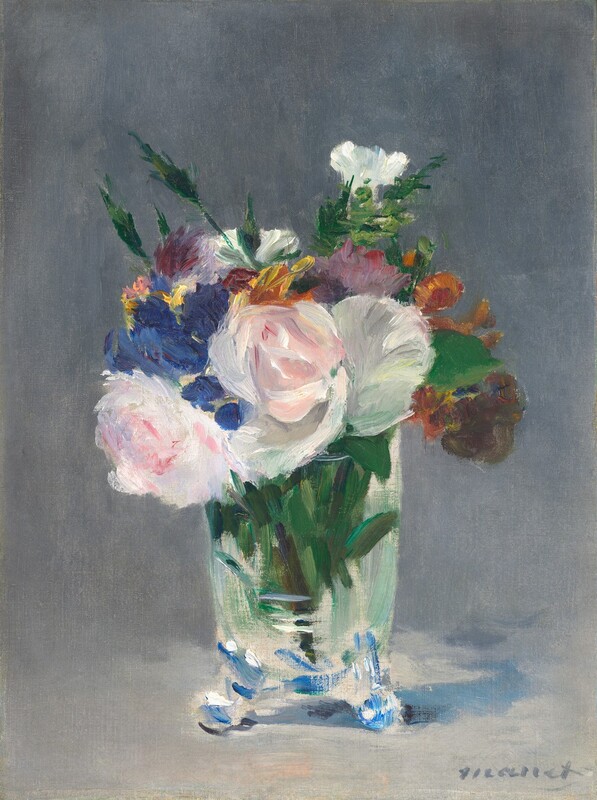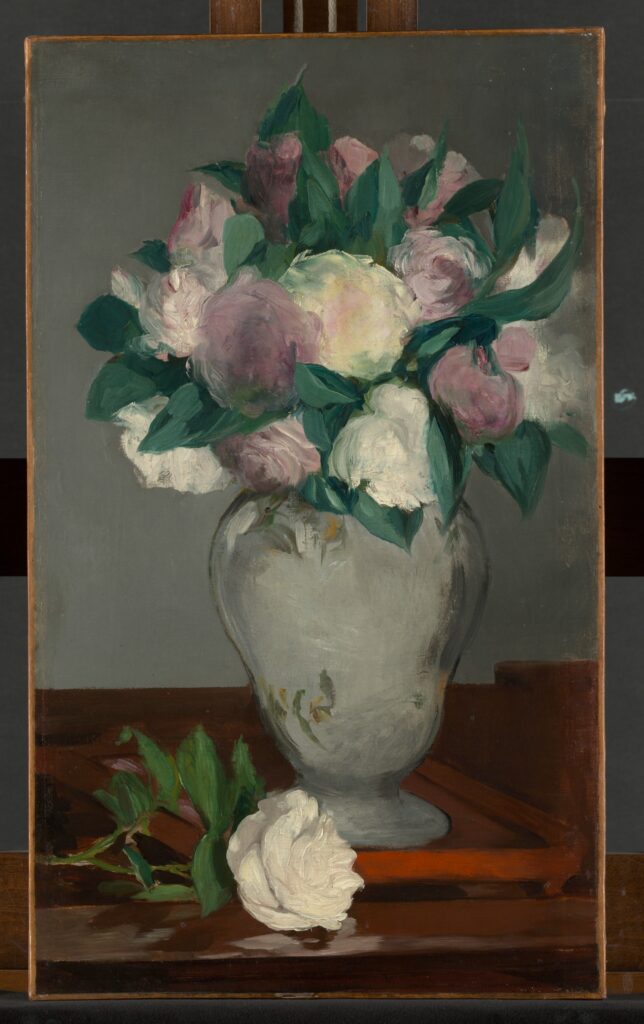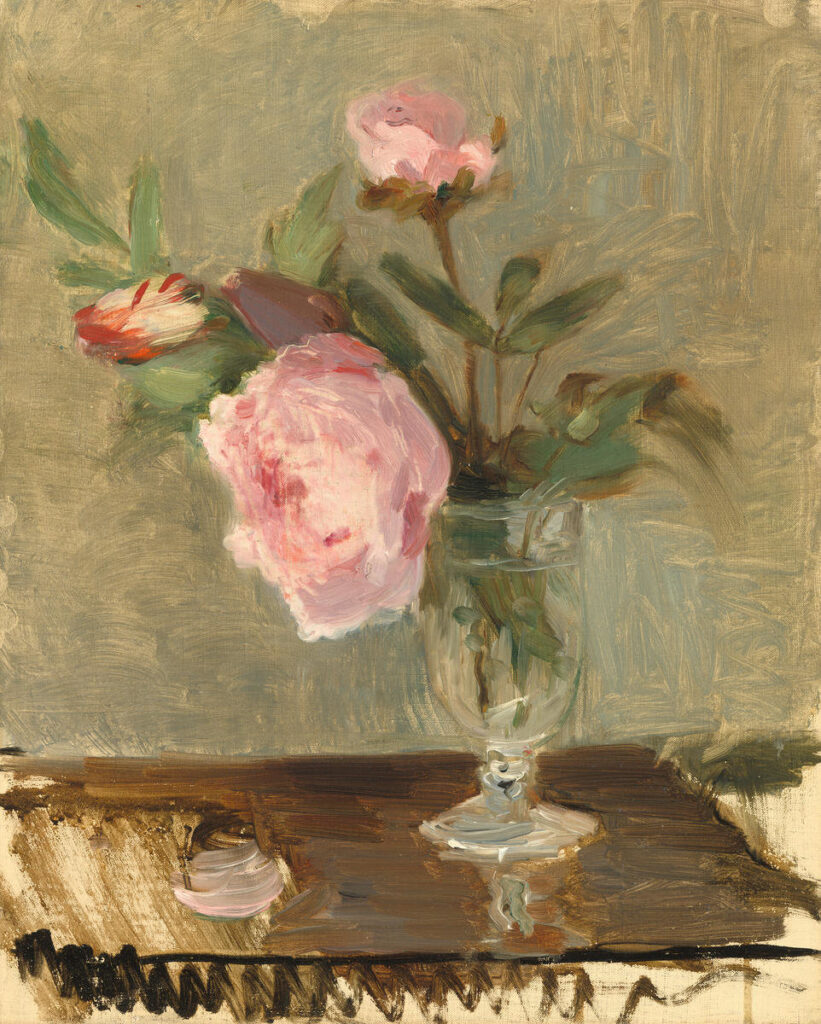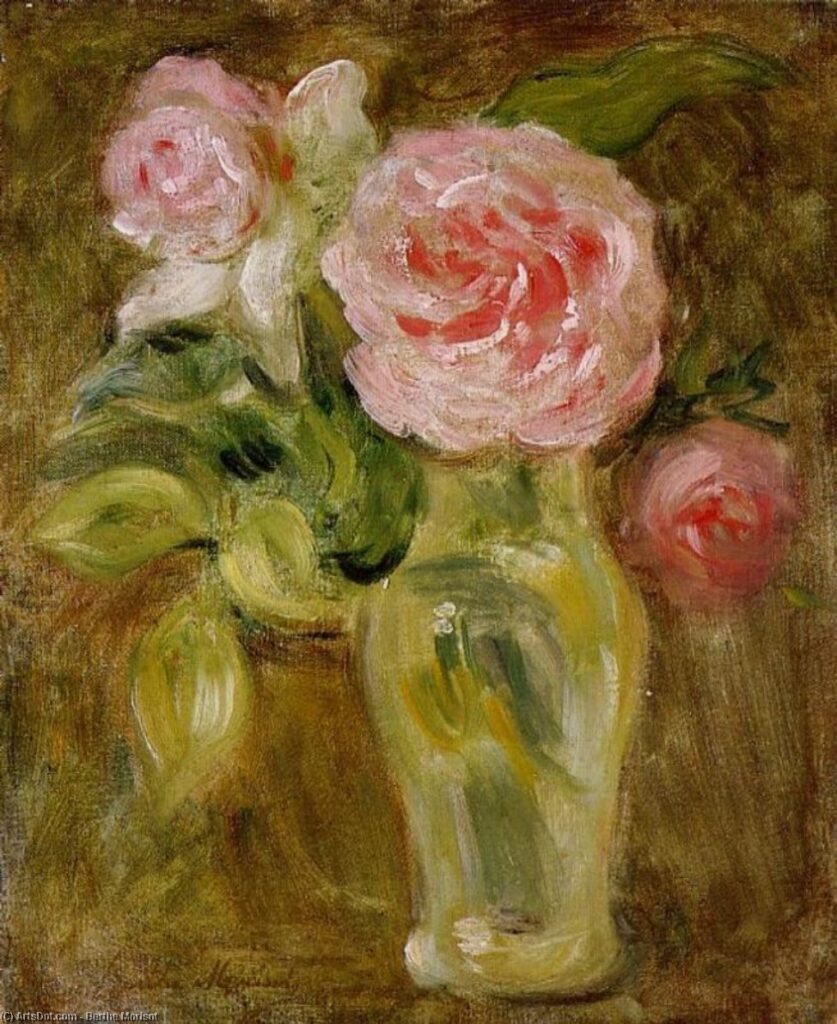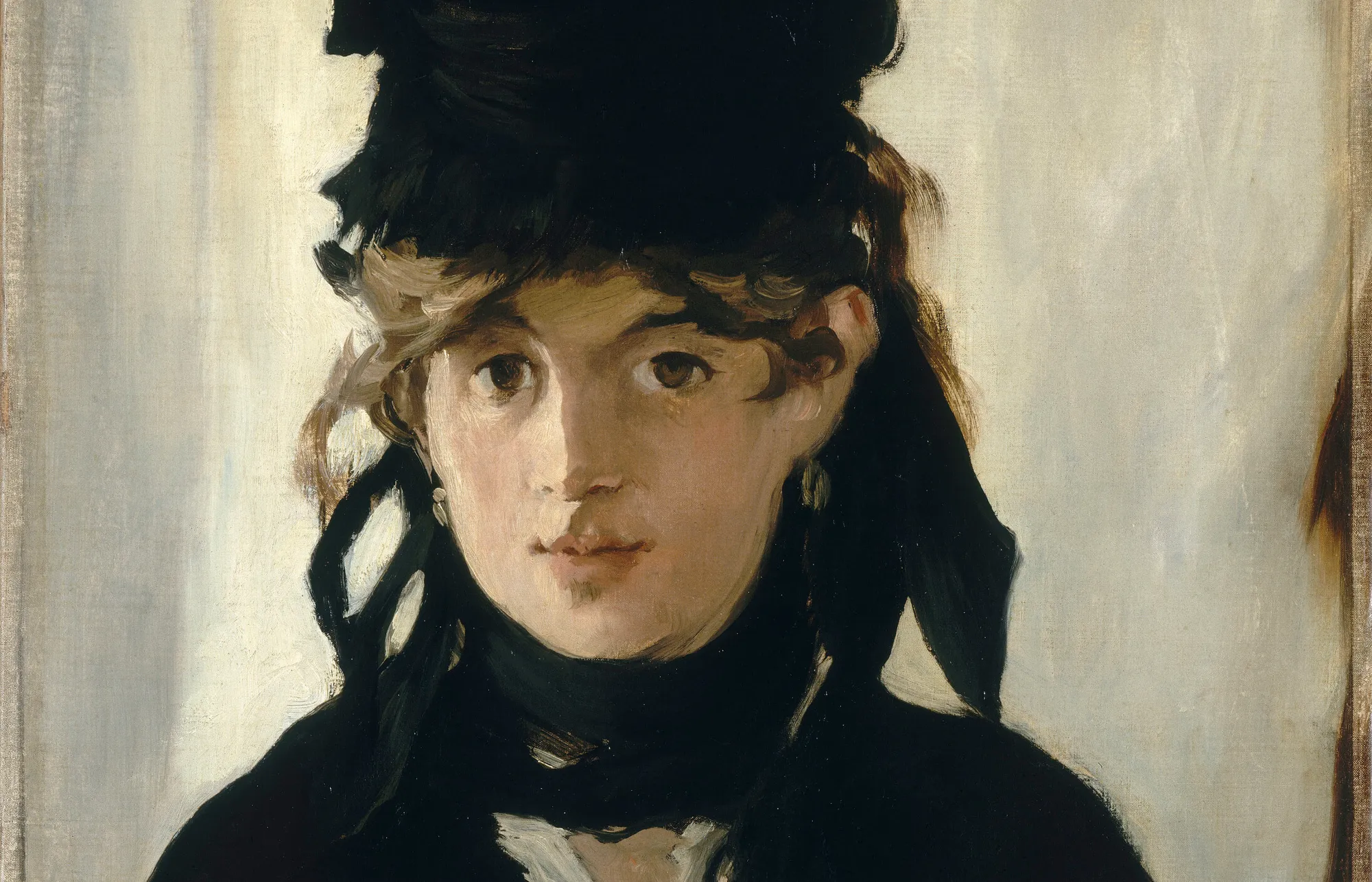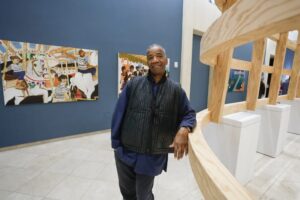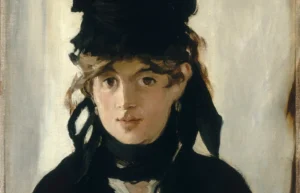Exhibition at the Legion of Honor thru March 1, 2029
Morisot
Berthe Morisot (1841–1895) came from an eminent family, the daughter of a senior government official and the great-niece of Rococo artist Jean-Honoré Fragonard. A fellow artist, introduced Morisot to Edouard Manet in 1868. She became his longtime friend and colleague, and she married his brother, Eugène Manet, in 1874. Correspondence between Morisot and Édouard Manet shows warm affection, and Manet gave her an easel as a Christmas present. Morisot often posed for Manet and there are several portrait paintings of Morisot such as Repose Portrait of Berthe Morisot and Berthe Morisot with a Bouquet of Violets.
Morisot created a sense of space and depth through the use of color. Although her color palette was somewhat limited, her fellow impressionists regarded her as a “virtuoso colorist.” She typically made expansive use of white to create a sense of transparency, whether used as a pure white or mixed with other colors. In her large painting The Cherry Tree, the colors are more vivid but still emphasize the form.
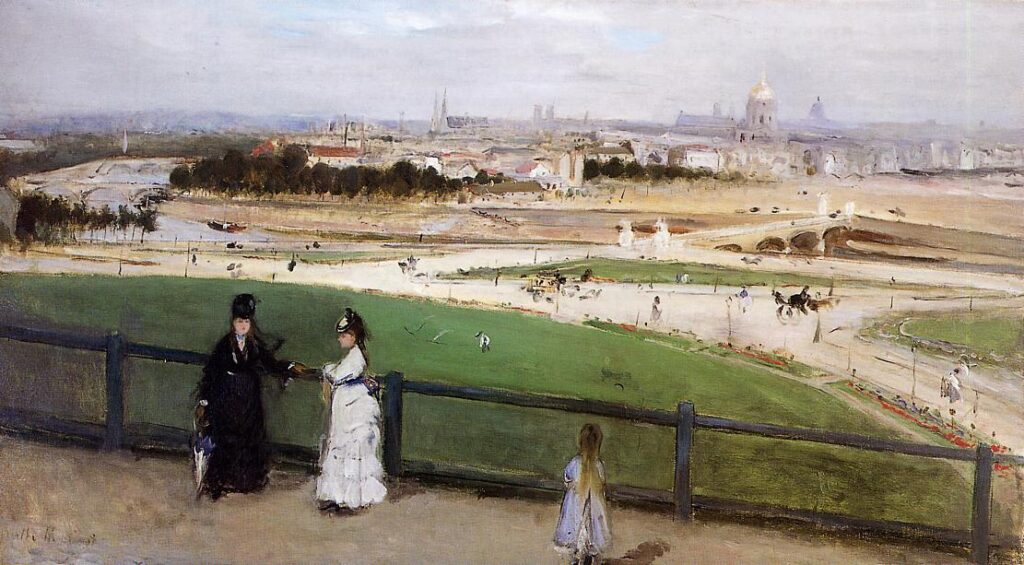
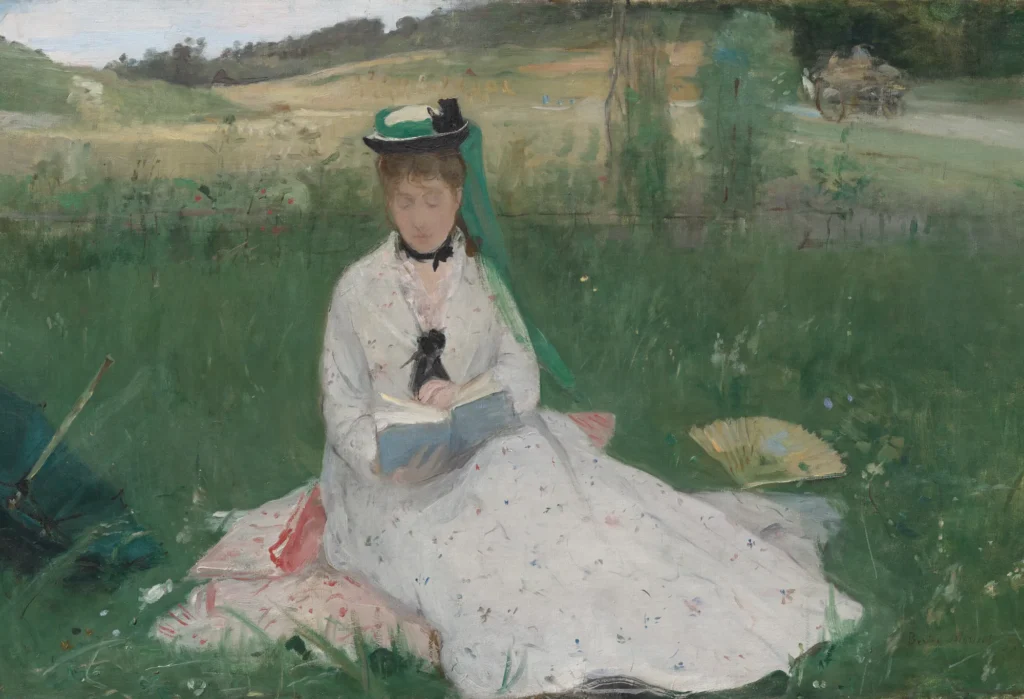
Inspired by Manet’s drawings, she kept the use of color to a minimum when constructing a motif. Responding to the experiments con- ducted by Manet and Edgar Degas, Morisot used barely tinted whites to harmonize the paintings. Like Degas, she played with three media simultaneously in one painting: watercolor, pastel, and oil paints. In the second half of her career, she learned from Renoir by mimicking his motifs. She also shared an interest in keeping a balance between the density of figures and the atmospheric traits of light with Renoir in her later works.
Manet
Edouard Manet (1832–1883) was born in Paris to a wealthy family. He showed promise in drawing and caricature from an early age. After twice being denied admission to France’s prestigious Naval College, he enrolled in 1850 at the studio of academic artist Thomas Couture. While copying paintings at the Louvre, Manet became attracted to the bold brushwork of Spanish painter Diego Velázquez. He soon adopted a free manner of painting that opposed the polished surfaces revered by academic artists.
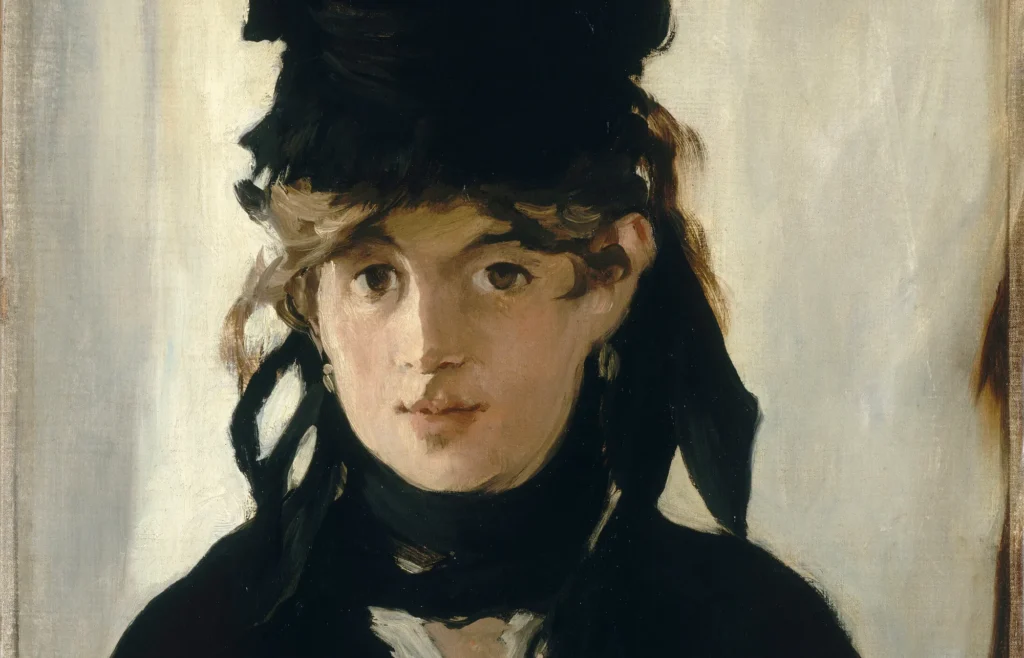

Manet was the elder statesman of the Impressionists, although he never participated in their exhibitions but continued to compete in the Salons. His unconventional subject matter drawn from modern life, and his concern for the artist’s freedom in handling paint made him an important precursor of Impressionism. While he had gained a reputation as an influential innovator, only posthumously would he be recognized as a father of modern art.
In Paris he associated with avant-garde writers, notably Baudelaire, who appears in ‘The Music in the Tuileries Gardens’. Manet’s work became famous at the Salon des Refusés, the exhibition of paintings rejected by the official Salon. In 1863 and 1867 he held one-man exhibitions. In the 1870s, under the influence of Monet and Renoir, he produced landscapes and street scenes directly inspired by Impressionism. He remained reluctant to exhibit with the Impressionists, and sought the approval of the Salon all his life.
Floral Paintings by Edouard Manet and Berthe Morisot
